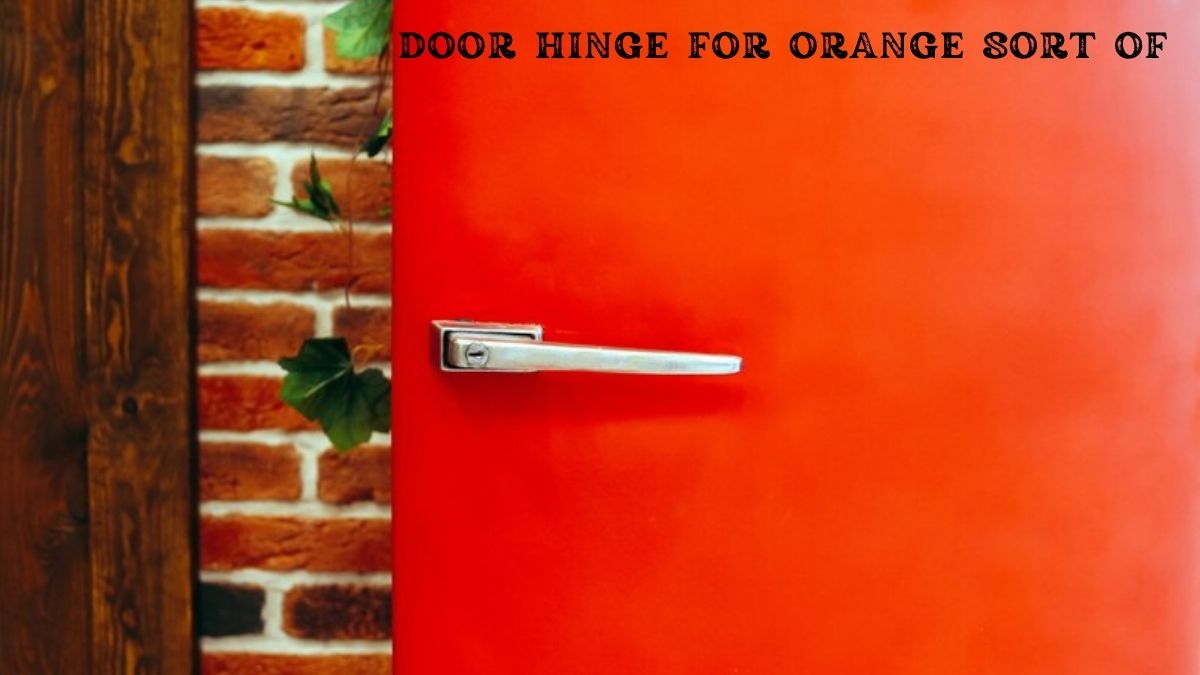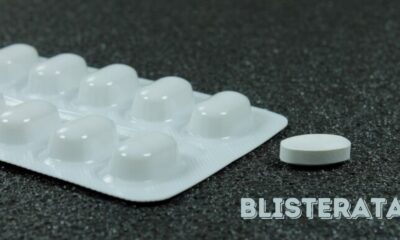TOPIC
Exploring the Concept of Door Hinges for ‘Orange Sort Of’

Have you ever thought about door hinges in a way that goes beyond their common, everyday use? Come with me as I delve into a peculiar yet intriguing subject: door hinges for “door hinge for orange sort of.” Combining pragmatism with a touch of whimsical, this expression encourages us to see an everyday item through a new, imaginative lens.
Understanding Door Hinges
Get the fundamentals out of the way first. There is usually a limited amount of rotational freedom between two solid objects connected by a mechanical bearing, such as a door hinge. Their principal function is to facilitate the effortless opening and closing of doors.
You might also like:https://vapespen.com/
Common Types of Door Hinges
There are several types of door hinges, including:
- Butt Hinges: The most common type, used for standard doors.
- Piano Hinges: Long, continuous hinges that run the entire length of the door.
- Ball Bearing Hinges: Ideal for heavy doors due to their smooth operation.
- Concealed Hinges: Hidden when the door is closed, often used for cabinets.
Deciphering ‘Orange Sort Of’
Does “orange sort of” have any specific meaning? Being an abstract expression, it may be understood in several ways, often implying something unique or imaginative.
Creative Contexts and Applications
Here, door hinge for orange sort of may mean giving the mundane door hinge for orange sort of a new and exciting spin. It challenges us to think beyond the box when faced with an ordinary item.
Innovative Uses for Door Hinges
Door hinges aren’t just for doors anymore. They can be repurposed in numerous creative ways.
Artistic and Functional Examples
- Sculptures: Artists use hinges to create movable parts in their sculptures.
- Furniture: Designers incorporate visible hinges into unique furniture pieces.
- Jewelry: Hinges can be used in jewelry to create pieces with moving parts.
Creative Door Hinge Designs
Door hinges have several purposes beyond their practical use. A wide variety of creative designs have expanded the traditional definition of a hinge.
Unique Materials and Styles
- Glass Hinges: Made from durable glass, these are visually striking.
- Recycled Materials: Eco-friendly hinges crafted from recycled metals.
- Custom Shapes: Hinges designed in various shapes like animals or abstract forms.
Notable Innovative Designs
- Invisible Hinges: These are hidden within the door and frame, offering a sleek look.
- Pivot Hinges: Allow doors to swing open in both directions, providing a modern touch.
DIY Projects with Door Hinges
Want to get crafty? For both practical and entertaining do-it-yourself endeavors, door hinges may serve as the focal point.
Simple and Creative DIY Ideas
- Hinged Picture Frames: Create frames that open like books.
- Foldable Tables: Use hinges to make tables that can be easily folded and stored.
- Decorative Boxes: Build small, hinged boxes for storage or gifts.
Step-by-Step Guide to a Fun Project
Hinged Jewelry Box:
- Materials Needed: Small wooden box, two small hinges, screwdriver, screws, paint or stain.
- Step 1: Paint or stain the box and let it dry.
- Step 2: Attach the hinges to the back of the box lid and body.
- Step 3: Secure the hinges with screws.
- Step 4: Decorate the box as desired.
Choosing the Perfect Door Hinge
Selecting the right hinge is essential for both functionality and aesthetics.
Key Factors to Consider
- Weight of the Door: Ensure the hinge can support the door’s weight.
- Material: Match the hinge material with the door and its surroundings.
- Finish: The finish should complement the overall decor.
- Functionality: Look for special features like self-closing or soft-closing mechanisms.
Tips for Making the Right Choice
- Match Size to Door: The hinge size should be proportionate to the door.
- Environment: Use rust-resistant hinges for outdoor applications.
- Load Capacity: Check that the hinge can handle the door’s weight.
Maintaining Door Hinges
Keeping your door hinges in good shape ensures their longevity and proper function.
Regular Maintenance Tips
- Lubricate Regularly: Apply lubricant to the hinge pins to prevent squeaking.
- Tighten Screws: Regularly check and tighten any loose screws.
- Clean Hinges: Wipe down hinges with a damp cloth to remove dirt and grime.
Solving Common Hinge Problems
- Squeaky Hinges: Lubricate to eliminate noise.
- Rusty Hinges: Clean with a rust remover and apply a protective coating.
- Loose Hinges: Use longer screws or additional screws to secure them.
Environmental Considerations
Considering the environmental impact of door hinges is crucial in today’s eco-conscious world.
Sustainable Materials and Practices
- Metal Hinges: Often recyclable and durable.
- Plastic Hinges: Less durable and harder to recycle.
- Wooden Hinges: Eco-friendly but less common and less durable.
Eco-Friendly Hinge Options
- Recycled Metals: Hinges made from recycled materials.
- Sustainable Manufacturing: Companies that focus on reducing their carbon footprint.
- Biodegradable Hinges: Rare but available, made from biodegradable materials.
Future Trends in Door Hinge Design
The future of door hinge design is full of exciting possibilities.
Emerging Design Trends
- Smart Hinges: Integrated with smart home systems for automation.
- Adjustable Hinges: Allow for easy adjustments to ensure perfect door alignment.
- Aesthetic Enhancements: Combining functionality with visual appeal.
Predictions for the Future
- Increased Technology Use: More hinges will integrate smart technology.
- Sustainable Practices: A shift towards eco-friendly materials and manufacturing.
- Custom Designs: Growing demand for personalized and artistic hinge designs.
Conclusion
Though mundane at first glance, door hinges may really be extremely interesting when seen in a creative light. Ingenious designs and do-it-yourself projects are only the beginning of what door hinges can achieve. You can accomplish a lot with a simple door hinge, whether you want to make something special for your house or are interested in a fun do-it-yourself project.
TECHNOLOGY
The Evolution and Functionality of Elevator Button

Elevator buttons are an essential yet often overlooked part of modern urban life. These small, rectangular panels equipped with up and down arrows have revolutionized the way we navigate multi-story buildings. Whether you’re in a high-rise office or an apartment complex, the simple press of a button instantly calls an elevator to your floor. But beyond this basic function, elevator buttons have undergone significant technological and design changes over the years. From the early mechanical systems to today’s advanced, touch-sensitive panels, the evolution of elevator buttons tells a fascinating story of convenience, safety, and innovation.
In this article, we’ll explore the history, design, and functionality of elevator buttons. We’ll also cover the latest developments in the field and answer some of the most common questions people have about this everyday technology.
The Origin of Elevator Button
Early Elevators: Manual Systems
Before the invention of the elevator button, early elevators required manual operation. A human operator controlled the elevator using a lever, manually guiding it to the desired floor. This process was inefficient, slow, and prone to human error.
Introduction of the Push Button System
The push-button system was a revolutionary development in the late 19th century, allowing passengers to summon elevators without needing an operator. This innovation simplified elevator use and improved efficiency by eliminating the need for manual control.
How Elevator Button Work
Basic Mechanism Behind Elevator Buttons
At their core, elevator buttons are simple electrical switches. When a button is pressed, it completes an electrical circuit that signals the elevator’s control system to respond. The elevator then moves to the requested floor.
Electrical Circuits and Elevators
Types of Elevator Button
Mechanical Push Buttons
Traditional mechanical push buttons rely on physical pressure to activate the elevator’s control system. These buttons are commonly found in older buildings and are known for their durability.
Touch-Sensitive and Sensor-Based Button
Modern elevators are often equipped with touch-sensitive buttons or even sensor-based panels. Instead of physically pressing a button, users can simply touch or hover their hand near the panel to summon the elevator.
Braille and Accessibility Features
To make elevators accessible to all, including those with visual impairments, most modern elevator buttons include Braille markings and audible signals to indicate when a floor has been selected.
The Importance of Design in Elevator Button
Ergonomics and Usability
The design of elevator buttons is crucial for user comfort and efficiency. Buttons must be easy to press, intuitively located, and responsive to touch.
Aesthetics in Modern Architecture
Elevator buttons are also a part of a building’s design and aesthetic. In modern architecture, sleek and minimalist button panels complement the overall look of the building.
Smart Elevators and the Future of Elevator Button
Touchless Technology
With the increasing demand for touchless technology, especially after the COVID-19 pandemic, more elevators are adopting sensor-based buttons. These systems use motion sensors or voice commands to allow users to call an elevator without touching the panel.
AI Integration in Elevators
Artificial intelligence is beginning to play a role in elevators. Smart elevators can predict which floors will be most in-demand and adjust their operation accordingly, optimizing for efficiency and convenience.
Safety Features in Elevator Button
Emergency Buttons
All elevators are equipped with emergency buttons that allow passengers to alert building management or emergency services in case of a malfunction or emergency.
Fire Safety Protocols
In the event of a fire, elevator buttons are disabled, and elevators automatically descend to a safe floor. Special fireman’s buttons are available for emergency personnel.
Why Elevator Button Are Often Recessed
Prevention of Accidental Pressing
Many elevator buttons are recessed into the panel to prevent accidental activation, ensuring that elevators are not summoned unintentionally.
Vandalism Protection
Recessed buttons are also harder to damage, offering protection against vandalism in public areas.
Common Issues with Elevator Button
Wear and Tear
Elevator buttons, particularly in high-traffic areas, are prone to wear and tear. Over time, they may become less responsive or require replacement.
Malfunctioning Buttons
Occasionally, elevator buttons can malfunction due to electrical issues, causing delays and inconvenience for users.
Maintenance and Care for Elevator Button
Regular Cleaning
Due to frequent use, elevator buttons can harbor germs and bacteria. Regular cleaning and disinfecting are necessary to ensure hygiene, particularly in public buildings.
Routine Electrical Checks
Periodic checks of the elevator’s electrical system help prevent button malfunctions and extend the lifespan of the system.
Innovations in Elevator Button Materials
Durable Materials
Modern elevator buttons are made from durable materials like stainless steel, designed to withstand heavy use.
Antimicrobial Coatings for Hygiene
Some elevator buttons now feature antimicrobial coatings that reduce the spread of germs, offering a safer experience for users.
Why Some Buildings Only Have One Button
Single-Button Systems in Low-Rise Buildings
In smaller buildings, particularly those with only a few floors, it’s common to see elevators with a single button that controls both up and down movements.
Traffic Flow Considerations
In high-rise buildings, elevators are designed to handle high traffic efficiently, often requiring multiple buttons and smart routing systems to avoid congestion.
Sustainability in Elevator Design
Energy-Efficient Systems
Elevator manufacturers are increasingly focused on creating energy-efficient systems that reduce the overall environmental impact of elevator use.
Eco-Friendly Materials in Buttons
Sustainability efforts extend to the materials used in elevator buttons, with many companies opting for eco-friendly alternatives.
Elevator Buttons and Accessibility for Disabled People
Braille and Audible Signals
Modern elevator buttons are equipped with Braille, tactile feedback, and audible cues, ensuring accessibility for those with disabilities.
Voice-Activated Elevators
Some advanced systems allow users to summon elevators using voice commands, making elevators more accessible to people with mobility or vision impairments.
Conclusion
Elevator buttons may seem like a small detail, but they play a critical role in our daily lives. From their early origins to the modern, tech-savvy systems we see today, elevator buttons have evolved to meet the needs of accessibility, efficiency, and convenience. As technology continues to advance, we can expect to see even more innovations, particularly in terms of touchless and AI-integrated systems. Whether in a bustling skyscraper or a quiet apartment building, elevator buttons help us move through the world with ease.
TOPIC
The Ultimate Guide to Lace Glue: Everything You Need to Know

Because it allows for a safe and realistic-looking connection to wigs made of human or synthetic hair, lace glue’s has changed the wig industry forever. But first, lace glue, what is it, and how crucial is it? Okay, let’s kick things off.
Types of Lace Glue
Water-Based Lace Glue
It has revolutionized the world of wigs, providing a secure and natural-looking attachment for both synthetic and human hair wigs. But what exactly is lace glue’s and why is it so important? Let’s dive in.
Solvent-Based Lace Glue
If you need a solution that will endure, go no further than solvent-based lace glue’s. It offers a very strong grip. Nonetheless, it need cautious removal to prevent skin damage and might be more abrasive on the skin.
Choosing the Right Lace Glue
Skin Sensitivity Considerations
Think about your skin type before choosing a lace adhesive. A water-based formulation is the way to go for those with sensitive skin. To avoid any potential allergic reactions, it is recommended to do a patch test prior to complete administration.
Environmental Factors
Think about your environment. If you live in a humid area or plan to be active, you might need a stronger, solvent-based glue to keep your wig in place.
Preparing Your Skin for Lace Glue
Cleaning and Drying the Skin
Before applying lace glue’s, make sure your skin is clean and dry. This helps the glue adhere better and prevents any irritation or breakouts.
Applying a Skin Protector
Using a skin protector creates a barrier between your skin and the glue, reducing the risk of irritation and ensuring a longer-lasting hold.
Application Process
Step-by-Step Guide
- Clean Your Skin: Use an alcohol-based cleanser to remove oils and dirt.
- Apply Skin Protector: Let it dry completely before proceeding.
- Apply the Glue: Use a thin, even layer around the perimeter of your hairline.
- Let it Dry: Wait until the glue becomes tacky before placing the wig.
- Press and Hold: Secure the wig in place, pressing firmly for a few seconds.
Common Mistakes to Avoid
- Applying too much glue can cause a mess and weaken the hold.
- Not waiting for the glue to become tacky can result in a poor bond.
- Skipping the skin protector step can lead to irritation.
Maintaining Your Wig with Lace Glue
Daily Care Tips
- Avoid excessive sweating or water exposure to maintain the glue’s hold.
- Gently clean the edges of your wig to remove any dirt or oils.
Long-Term Maintenance
Regularly check the bond and reapply glue as needed. Keeping your wig and scalp clean will help extend the life of both your wig and the adhesive.
Removing Lace Glue Safely
Recommended Products
Use products specifically designed for removing lace glue’s, such as adhesive removers or isopropyl alcohol.
Step-by-Step Removal Guide
- Apply Remover: Saturate the glued area with the remover.
- Let it Sit: Allow the remover to break down the glue.
- Gently Peel: Carefully lift the wig, avoiding any harsh pulling.
- Clean Residue: Wipe away any remaining glue from your skin.
Top Brands of Lace Glue
Ghost Bond
Known for its strong hold and waterproof formula, Ghost Bond is a favorite among wig wearers.
Bold Hold
Bold Hold offers a variety of adhesives, catering to different skin types and hold strengths.
Esha
Esha is praised for its easy application and gentle formula, making it ideal for beginners.
Lace Glue for Different Wig Types
Human Hair Wigs
Human hair wigs require a strong, durable adhesive. Solvent-based glues are often preferred for their longevity.
Synthetic Wigs
Synthetic wigs can work well with water-based adhesives, offering a secure hold without damaging the fibers.
Common Issues and Solutions
Allergic Reactions
If you experience redness, itching, or swelling, remove the glue immediately and consult a dermatologist.
Glue Residue
Use an adhesive remover or oil to gently clean any residue from your skin and wig.
Lace Glue Myths and Facts
- Myth: Lace glue’s damages your natural hair. Fact: When used correctly, lace glue’s doesn’t harm your hair. Proper removal and care are key.
- Myth: All lace glues are the same. Fact: Different formulas cater to various skin types and hold requirements.
DIY Lace Glue Alternatives
Homemade Solutions
You can create a basic adhesive using sugar, water, and vinegar. However, these solutions may not provide the same hold as commercial products.
Pros and Cons
DIY alternatives are cost-effective but may lack the strength and durability of professional lace glues.
Frequently Asked Questions about Lace Glue
How Long Does Lace Glue Last?
Typically, lace glue can last from one to three weeks, depending on the type of glue and environmental factors.
Is Lace Glue Waterproof?
Many lace glues are waterproof, but it’s best to check the product specifications.
Can I Swim with Lace Glue?
Yes, but ensure you’re using a waterproof glue and take extra care to secure your wig.
How Do I Prevent Allergic Reactions?
Perform a patch test before full application and use skin protectors.
Can I Reuse Lace Glue?
No, lace glue’s is intended for single-use applications to ensure the best hold and hygiene.
Expert Tips for Using Lace Glue
- Professional Advice: Always follow the manufacturer’s instructions for the best results.
- Insider Secrets: Use a blow dryer on a cool setting to speed up the drying process and ensure a secure hold.
Conclusion
Anyone who wants to wear wigs with self-assurance and comfort must own lace glue. You may get a smooth and realistic wig experience by learning about the many kinds of glue, how to apply it correctly, and what to do when it becomes dirty.
TOPIC
Best Non-Aerosol Dry Shampoo: Eco-Friendly and Effective Solutions for Fresh Hair

Have you ever had to rush to get dressed after waking up late, only to remember that you forgot to wash your hair? Save the day with best non aerosol dry shampoo! However, when it comes to environmental and health concerns, not all dry shampoos are the same. An outstanding alternative is dry shampoos that do not include aerosols. We’ll go into the reasons these choices are great and look at a few of the greatest ones.
Benefits of Non-Aerosol Dry Shampoo
Environmental Impact
Even if they’re handy, aerosol cans are bad for the environment. In addition to being non-recyclable, they add to air pollution. However, a more ecological option would be to go with a non-aerosol dry shampoo that comes in a recyclable container.
Health Benefits
Many aerosol products have chemicals that are bad for your health if you use them often. You may be certain that non-aerosol versions are safer for your scalp and general well-being since they are often formulated with natural substances.
Convenience and Portability
Powdered non-aerosol dry shampoos are convenient for on-the-go use since they won’t go everywhere. No need to fret about pressure fluctuations or leaks when you toss one in your luggage.
You might also like:https://vapespen.com/
How Non-Aerosol Dry Shampoo Works
Ingredients
Cornstarch, arrowroot powder, clay, and other non-aerosol dry shampoo components are common. With the help of these all-natural ingredients, your hair will seem clean and fresh after soaking up excess oil and grease.
Application Process
A non-aerosol dry shampoo couldn’t be easier to use. Apply the powder to your roots by dusting it on, massaging it in, and then brushing off any excess. A simple and fast method to revitalize your hair without using water.
Top Non-Aerosol Dry Shampoos
1. Rahua Voluminous Dry Shampoo
Features:
- Made with organic ingredients
- Adds volume and texture
Pros:
- Eco-friendly packaging
- Pleasant scent
Cons:
- On the pricier side
2. Acure Dry Shampoo
Features:
- Vegan and cruelty-free
- Suitable for all hair types
Pros:
- Affordable
- Easy to use
Cons:
- Can leave a white residue if not properly brushed out
3. Lulu Organics Hair Powder
Features:
- Organic and talc-free
- Available in various scents
Pros:
- Long-lasting effect
- Great for sensitive scalps
Cons:
- Strong scent may not be for everyone
4. Captain Blankenship Mermaid Dry Shampoo
Features:
- Organic and cruelty-free
- Adds volume and texture
Pros:
- Beautiful packaging
- Fresh scent
Cons:
- Slightly more expensive
5. Klorane Dry Shampoo with Oat Milk
Features:
- Gentle formula
- Suitable for all hair types
Pros:
- Softens and smooths hair
- No white residue
Cons:
- Moderate price range
How to Choose the Right Non-Aerosol Dry Shampoo
Hair Type Considerations
Different hair types need different formulations. Fine hair benefits from volumizing ingredients, while thick hair might need more oil-absorbing power.
Ingredients to Look For
Opt for products with natural ingredients like arrowroot powder, clay, and essential oils. Avoid those with talc or artificial fragrances.
Price vs. Quality
Higher-priced options often use better ingredients and have more sustainable packaging. However, there are plenty of affordable, high-quality choices too.
DIY Non-Aerosol Dry Shampoo Recipes
Basic Recipe
Mix equal parts cornstarch and arrowroot powder. Add a few drops of your favorite essential oil for a pleasant scent.
Recipe for Oily Hair
Combine 2 tablespoons of bentonite clay with 1 tablespoon of cornstarch. This mix will absorb excess oil effectively.
Recipe for Dark Hair
Mix 2 tablespoons of cocoa powder with 1 tablespoon of cornstarch. The cocoa powder helps blend the dry shampoo into dark hair, avoiding the white residue.
Tips for Using Non-Aerosol Dry Shampoo
Best Practices
- Apply at night to let it absorb oil while you sleep.
- Use a makeup brush for precise application.
Common Mistakes to Avoid
- Applying too much can leave a residue.
- Not brushing it out properly can make your hair look dull.
Conclusion
If you want to revive your hair without endangering the environment or your health, a non-aerosol dry shampoo is a great choice. They work well, are easy to use, and are available in a wide range of formulas to accommodate different hair types. Try one out and see the difference for yourself!
-

 LIFE STYLE6 months ago
LIFE STYLE6 months agoExploring the World: A Journey with myfavouriteplaces.org
-

 EDUCATION6 months ago
EDUCATION6 months agoλιβαισ: Unraveling the Cultural Enigma
-

 BUSINESS6 months ago
BUSINESS6 months agoRetra: Revolutionizing Workflow Management
-

 TECHNOLOGY6 months ago
TECHNOLOGY6 months agoUnlocking the Potential: Exploring the Power of GPT66X
-

 VAPE5 months ago
VAPE5 months agoHush Absolute Vape: Elevate Your Vaping Experience
-

 HEALTH & FITNESS6 months ago
HEALTH & FITNESS6 months agoUnderstanding Blisterata: Causes, Symptoms, and Treatment
-

 VAPE6 months ago
VAPE6 months agoUnderstanding the Lost Mary Vape Phenomenon
-

 VAPE5 months ago
VAPE5 months agoRaz Vape: Revolutionizing the Vaping Experience










